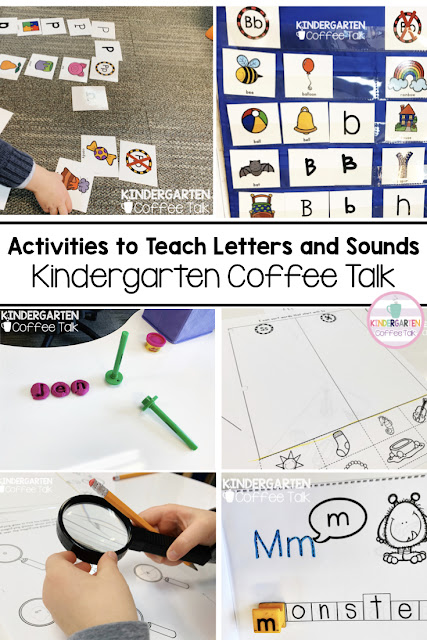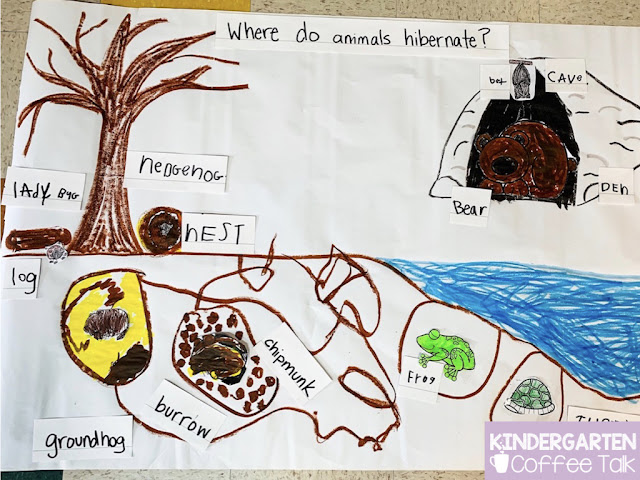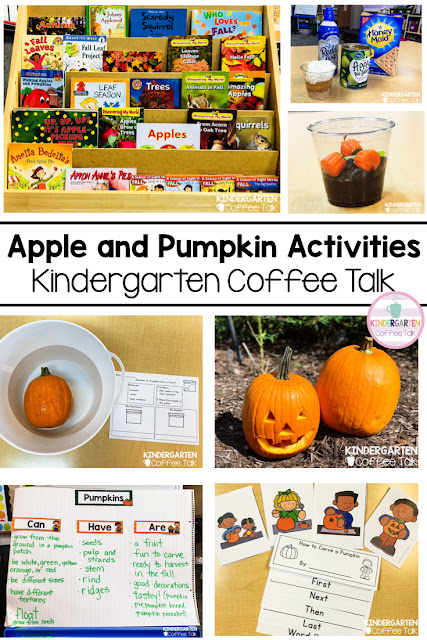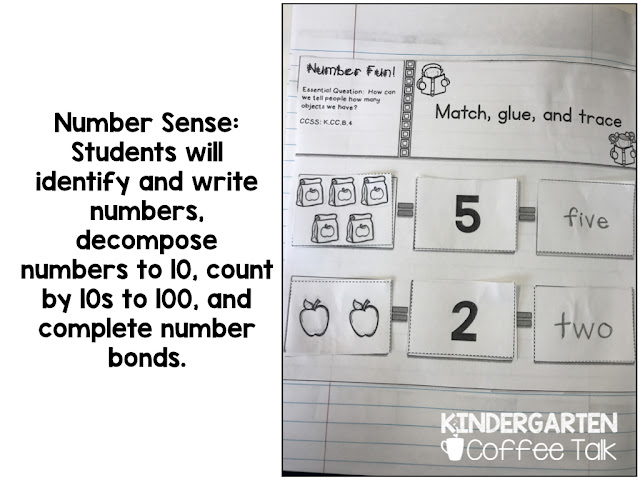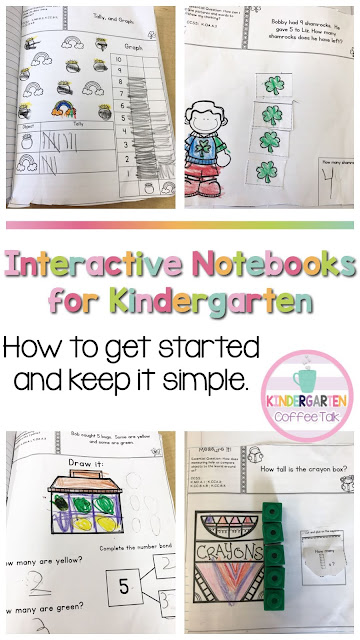Start with Names:
First and last names gives you the opportunity to introduce letters in a meaningful context. Kids love playing with their names and comparing them to their friends names. One of my favorite ways to do this is by making a name chart. Sorting names by their first letter on a name chart will give your students a reference that they can use when reading and writing through the year. You can also make a chart that compares the amount of letters in their names. This helps students think about the difference between a letter and a word as well as recognize that words can have a different amount of letters and still be a word. Some more fun activities for names include putting together name puzzles, building names with letter tiles, stamping names into dough, and picking a surprise letter and having the students do a thumbs up if it is in their name or a thumbs down if it isn't in their name.
 |
| These fun stamps are from https://www.lakeshorelearning.com |
Sorting letters:
One of the first things we do when learning about letters is sort between the target letter and words that start with that letter and letters and words that don't start with the target letter. When we do this with multiple fonts, it helps students look at the features of the letter. This is fun to do first in whole or small group and then it turns into a center. We like to pretend that we are letter detectives and "The Reading Detective Agency" has asked us to find a target letter and words that start with that letter in a group of letters and pictures. The engagement is high and the activities are predictable so the kids can focus on the learning. Its a win-win!
This sort was done with the whole class:
Recently we have been adding movement into our lessons by having students hop, bear crawl, or crab walk to a card, bring it to the pocket chart, and then hop back to their spots. Another option for this sort is to give students the cards and see if they can find the rule. Below is a group of students sorting cards as a team:
And this is a kiddo working independently to sort out letters:
We follow up the sorting activities with independent picture sorts in two ways so we can focus on words that start with the target letter. The first way we sort is by keeping that detective theme and looking for pictures using magnifying glasses.
We also do a cut and paste sort:
If you are interested in this resource, you can find it here in my Teachers Pay Teachers store.
I also like make these trace and stamp books with the kids. We use my thin smelly markers for tracing and then we stamp the first letter. After the kids make the books, I send them home so they can read them with their parents for even more letter practice!
 |
| Click here for this resource |
Alphabet books:
Reading alphabet books is another fun way to help students focus on letters and letter sounds. There are alphabet books for just about any topic and fun books about the alphabet. These are some examples, but by far not an exhaustive list of alphabet books.
 |
| This is one of my favorite series where the characters are letters! You can find it here |
 |
| Always a fan favorite! You can find it here |
 |
| A more traditional ABC book |
 |
| Another great one! |
How do you like to teach letters and letter sounds in your classroom? I'd love to hear from you!
Happy Teaching!






